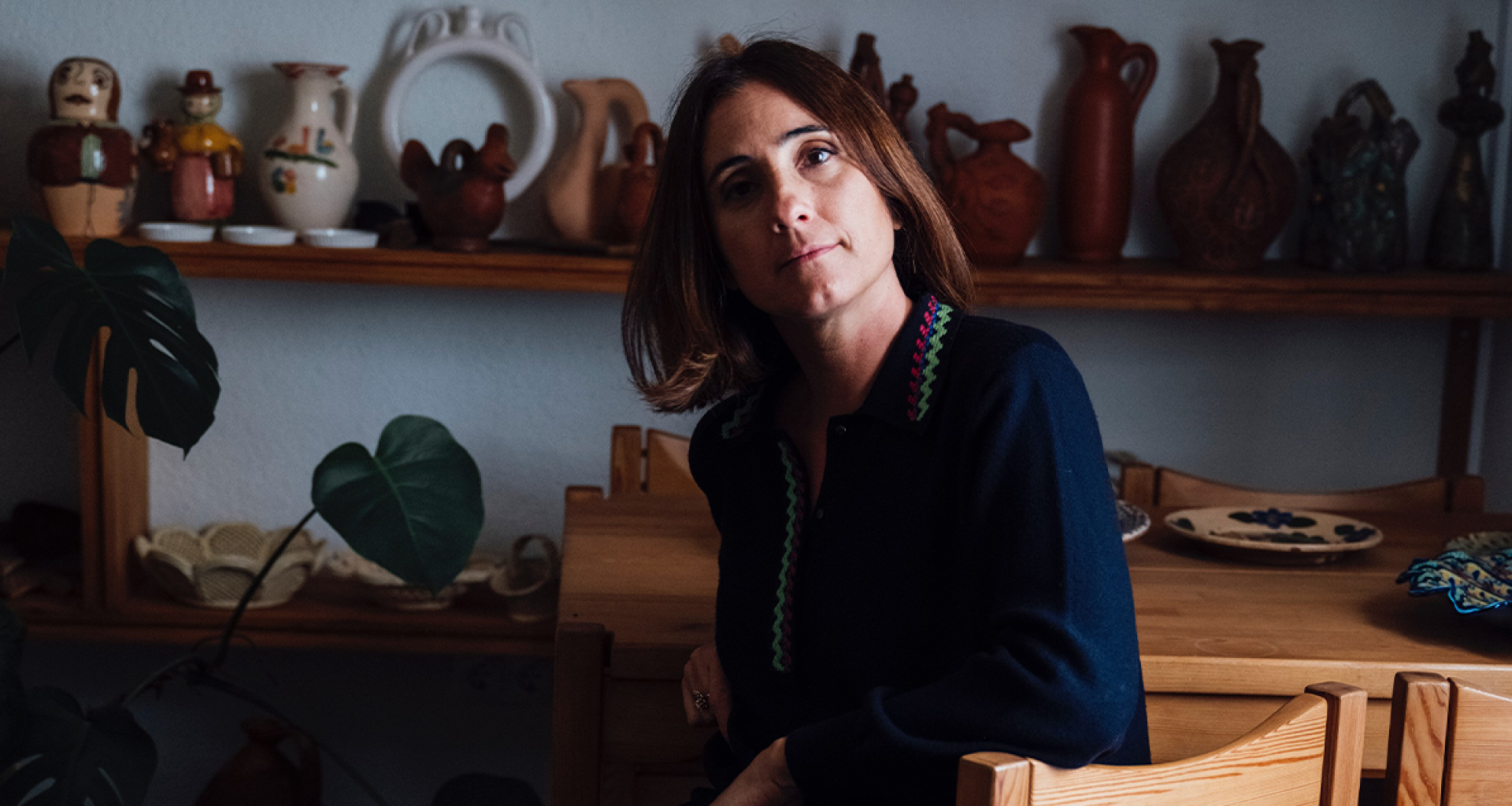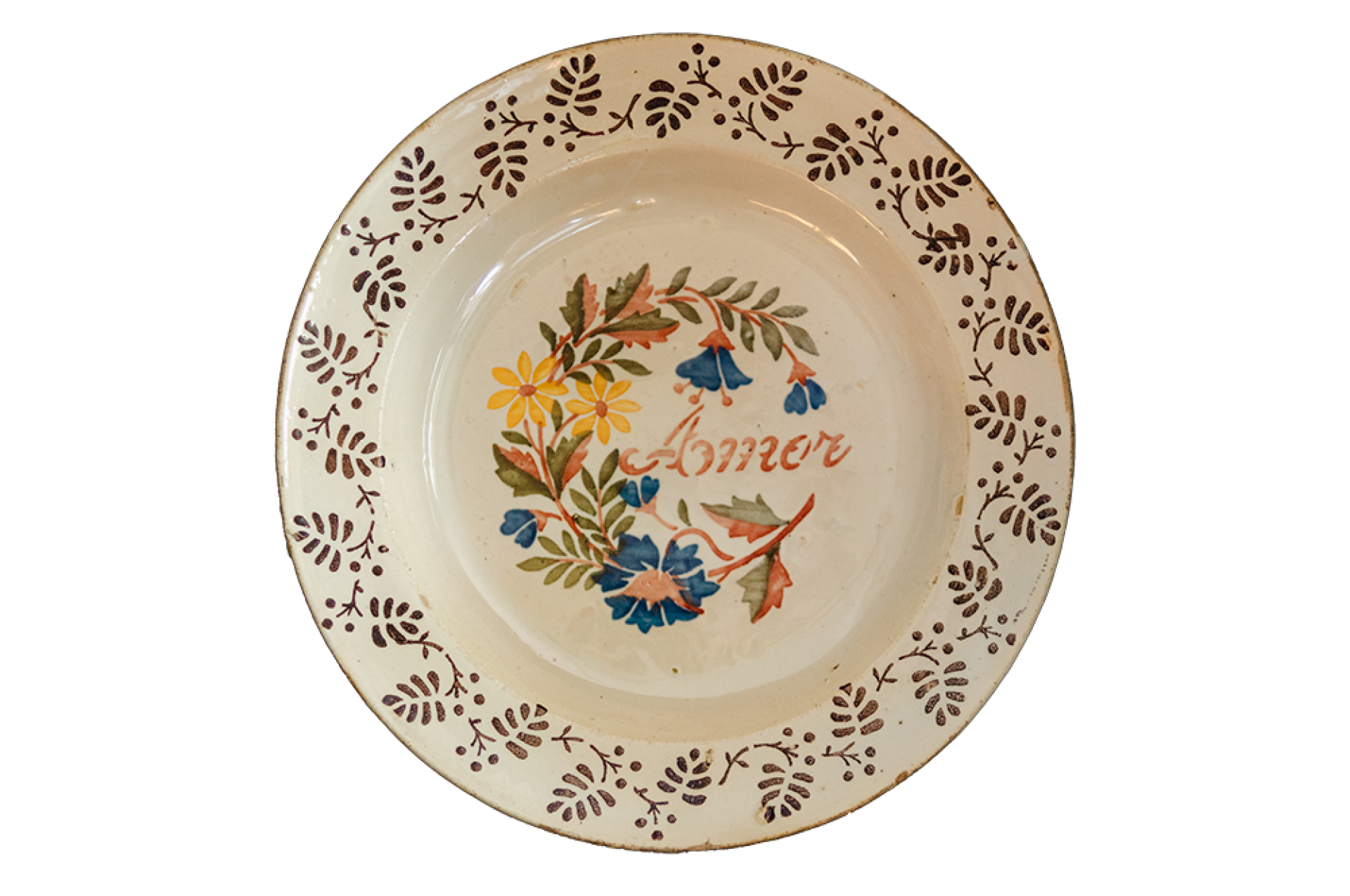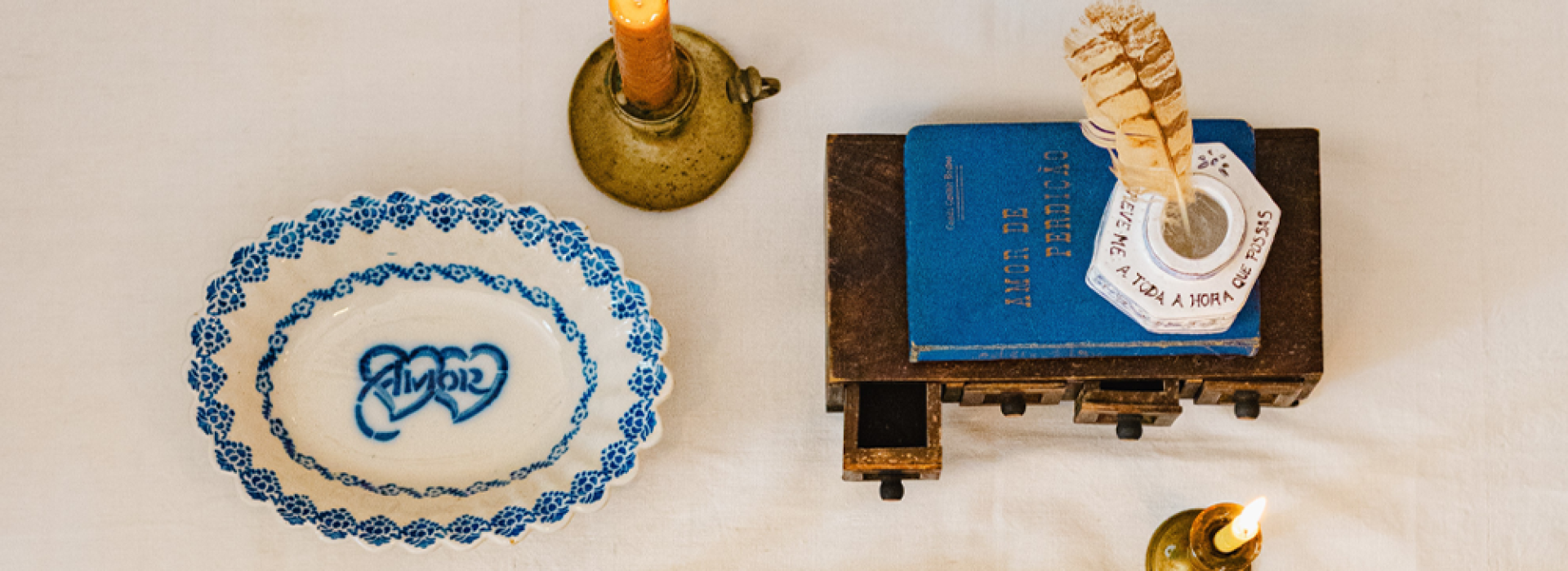‘LOVE IS BLIND’ - Shop Window Project by Felipa Almeida

As part of Livraria Lello's 119th anniversary celebrations, the Portuguese literary classic Amor de Perdição, by Camilo Castelo Branco, was chosen as the theme for the window decorations. This tribute takes shape through a proposal conceived by Felipa Almeida, who is responsible for its concept and artistic direction.
‘The aesthetic starting point for the shop window are some pieces from Felipa Almeida's personal collection, particularly “O Amor é Cego” (Love is Blind) from the Estremoz figurine and some antique talking plates.’
Inspired by the conventual atmosphere that permeates Camilo Castelo Branco's narrative, the showcase's aesthetic starting point are some pieces from Felipa Almeida's personal collection, particularly ‘O Amor é Cego’ (Love is Blind) from the Estremoz figurine and some antique talking plates.
Based on this visual heritage, the Hunchback Society duo was challenged to create eight original pieces that would dialogue with this universe. The pieces were hand-carved from stoneware and glazed in a colour specially created to match the colour palette of the pieces in the collection.

‘Each phrase has been carefully associated with a specific object and the context of the narrative, creating a link between the symbolic purpose and the text.'
Eight emblematic phrases from Amor de Perdição were selected by Felipa Almeida and painted with high-fire paint on raw glaze using the majolica technique.
Each phrase has been carefully associated with a specific object and the context of the narrative, creating a link between the symbolic purpose and the text.
The collection on display includes a chalice, a candlestick, a pot, a bell, an inkwell, a water jug and other elements evocative of the book's theme. This set also includes a work by the artist Albert Tannat, which features one of the phrases selected for a canvas.

The shop windows combine an austere setting - with convent-inspired furniture and cream linen curtains - with the playful expression of pieces carefully selected and produced for the occasion, in a juxtaposition that reflects Felipa Almeida's curatorial work.
